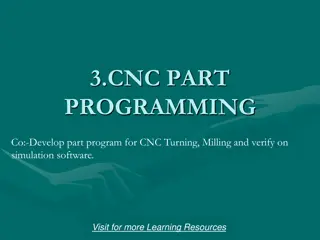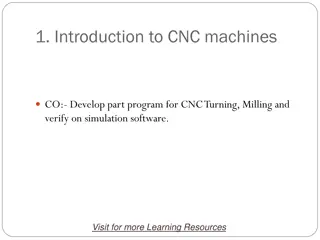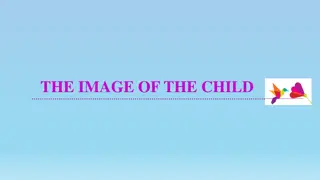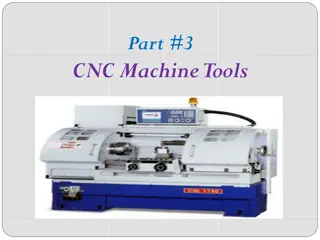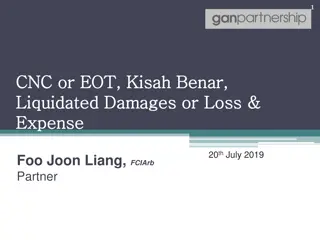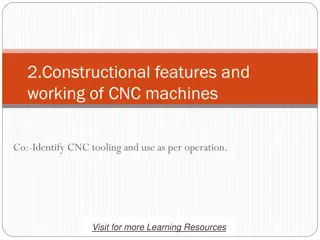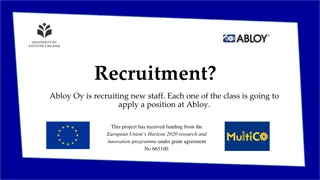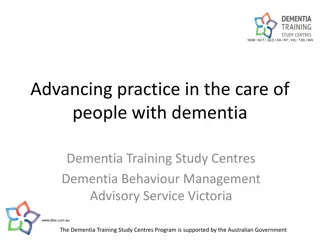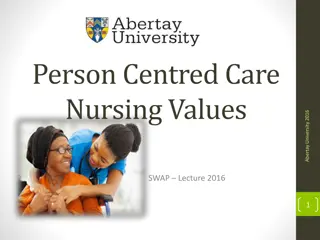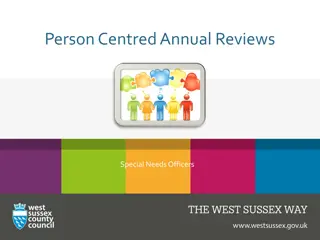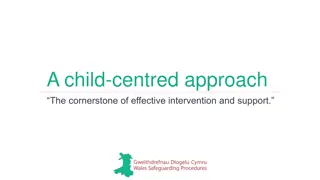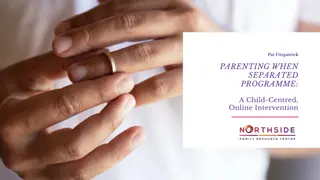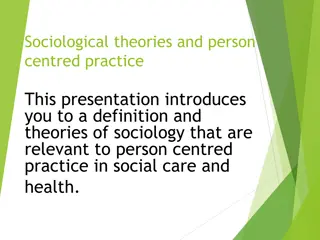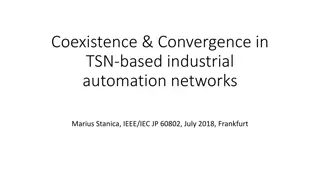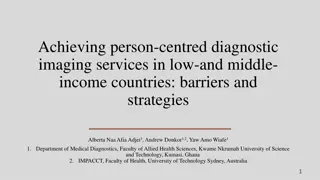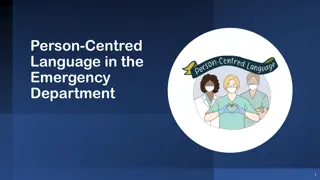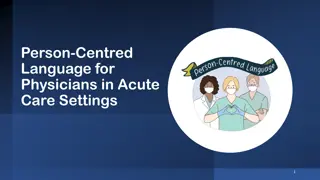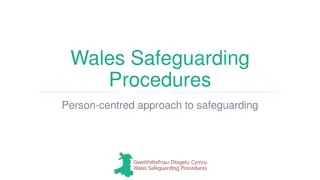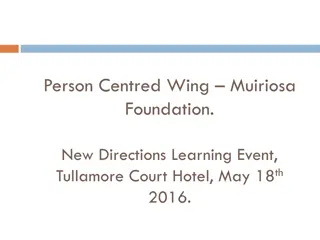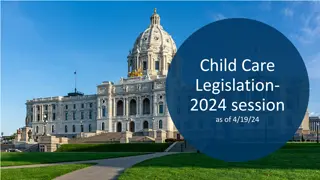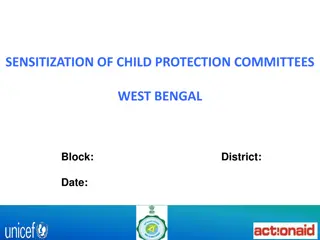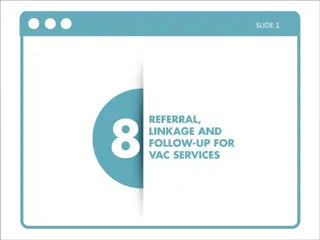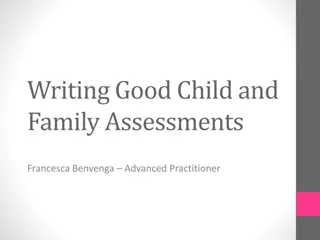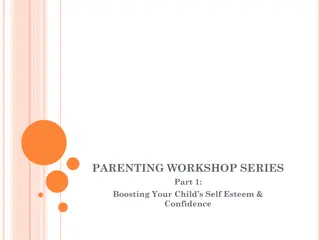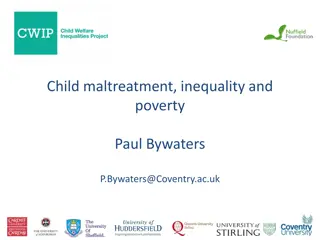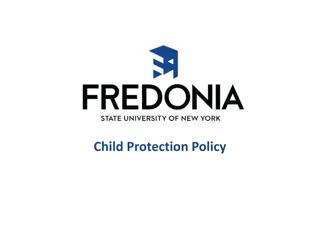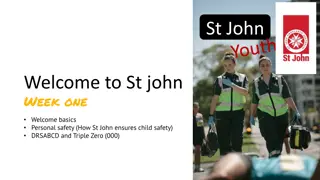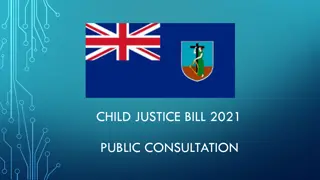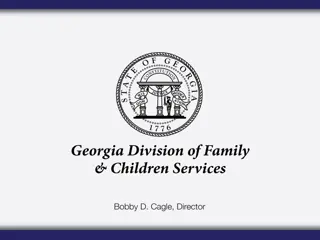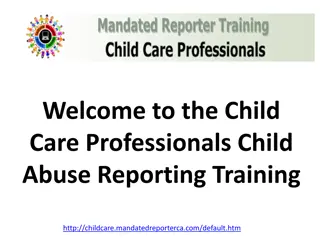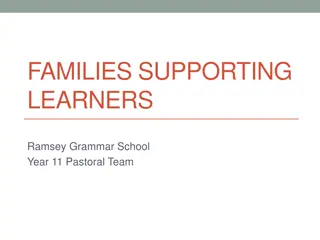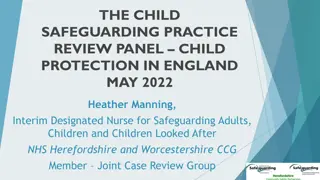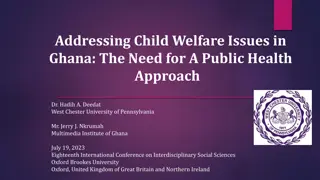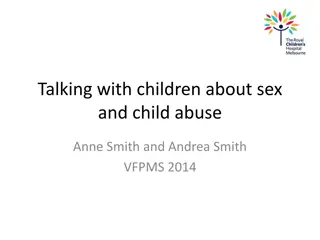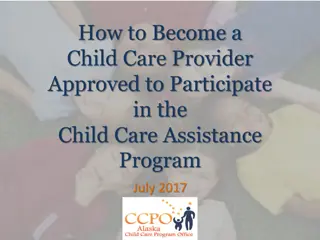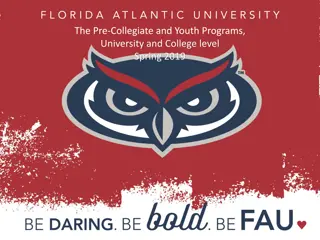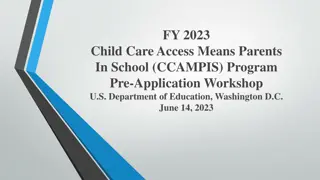Understanding Child-Centred CNC Programs
Discover key concepts, practical tools, and strategies for creating and maintaining child-centred CNC programs. Learn about the power of conversation, play-based learning, checklist implementation, and environmental considerations. Equip yourself with valuable insights to enhance your role as a child-centred administrator.
Download Presentation

Please find below an Image/Link to download the presentation.
The content on the website is provided AS IS for your information and personal use only. It may not be sold, licensed, or shared on other websites without obtaining consent from the author. Download presentation by click this link. If you encounter any issues during the download, it is possible that the publisher has removed the file from their server.
E N D
Presentation Transcript
What to look for in a child-centred CNC program: PART II will begin shortly Topics will include: What to look for in your child-centred CNC program The power of conversation What it means to be a child centred administrator And a new checklist/tool for CNC administrators that includes conversation starters for you to use with your CNC staff!
What to look for in a child-centred CNC program PART II Rachel Brophy Ph.D. RECE
Welcome and Introduction Key concepts Addressing some feedback from the fall New! Checklist/Conversation tool for Administrators Things to observe The power of conversation, things to discuss Common challenges and suggestions Resources & Links Summary and Questions for Reflection
Key Concepts Child centred practice and programming Play based learning Using the checklist as a tool to support your play based child centred CNC programs
Checklist & New Developments Suggestions of how and when the checklist can be used by SDRs and CNC staff: Place in a binder for easy access Post on the wall in the room so it can be seen and referred to throughout the day Use it as a guideline when setting up the program in the morning Make sections of the checklist part of a daily or weekly routine and conversation with other staff Find a way to indicate which things are consistently present, and which things seem more challenging. Discuss the ones that are more challenging with each other and with the administrator to do some problem solving
NEW! Child Centred Care Checklist for Administrators How to be a child centred administrator? Things to observe The power of conversation, things to discuss
What to look for in the ENVIRONMENT The physical space and arrangement, the materials, the d cor play and learning materials are accessible and available to children materials are well organized, labeled and easy to find and put away children s artwork, creations, projects are on display and within the children s view each child has their own space in the playroom (ex. cubbie) to build a sense of belonging each child sees evidence of themselves and their family in the environment (representations, real images, photos and albums, storybooks, artwork, and pretend play props that are similar to things from home)
What to look for in the ENVIRONMENT The physical space and arrangement, the materials, the d cor the room is arranged with play-based learning centres that are clearly distinguished and labelled there is a place for families to sit and interact with their children and CNC staff the room is arranged with clear boundaries, traffic patterns and self- contained learning experiences children can see CNC staff and use them as a resource if needed the room has areas for active play, for focused play and for quiet activities
What to look for in the INTERACTIONS Roles, responsibilities and relationships in the program These are observable and can be completed like a checklist but sometimes they are challenging to see in one observation. So, they also may make for great springboards for conversation with program staff
What to look for in the INTERACTIONS Roles, responsibilities and relationships in the program Children have opportunity to: use their bodies and their senses, explore, have fun play at various learning centres work independently work alongside others in developmentally appropriate ways problem solve independently create, imagine, be messy, go outside, build, pretend, and represent their thinking in multiple forms see themselves represented in play materials, books and images in the room express their emotions and share their thinking
What to look for in the INTERACTIONS Roles, responsibilities and relationships in the program Families: are welcome in the CNC program they are greeted, and there are places for them to sit have conversations with CNC staff who know and use their names are greeted in their home language and/or with a familiar greeting see the things their children make, create and play with
What to look for in the INTERACTIONS Roles, responsibilities and relationships in the program CNC Staff: know children s names and call them by their names during interactions interact with children through conversation, shared exploration, genuine praise, songs & stories get down to the children s level respond to children s questions and needs - even when they don t have a shared language are responsive in the moment and follow children s lead to create spontaneous curriculum assess, anticipate and extend children s learning engage in play and ask open ended questions provide a balance between child led, child initiated and caregiver supported learning create opportunity for children to be spontaneous and to direct their own play experiences and then sometimes joining them, but on their terms (not taking over and directing) help children to establish and maintain limits during play
The power of conversation Topics to discuss with your SDR and CNC staff Value of conversation for self-reflection, growth, and support of your child- centred program The next few slides transform the checklist points around curriculum into questions that will promote discussion
Conversations about CURRICULUM Planned and spontaneous play based learning experiences Are the activities planned based on observations of children, their interests and emerging skills, strengths and needs, understanding and capacity? How do you ensure the focus is children learning through play? Are things planned for the group and for individual children? Do you take into account the children s need to pursue their own interests and play experiences? How so? In what way are the linguistic, cultural and social contexts of children and their families valued? How do CNC Staff assess, anticipate and extend children s learning?
Conversations about CURRICULUM Planned and spontaneous play based learning experiences Do you provide opportunity for learning and development in all developmental domains (social/emotional, cognitive, speech/language, fine motor, gross motor) ? In what ways do children see themselves and their family represented in the space and play materials? Do materials include loose parts & open-ended materials ? What are some of these? Where and how does your program includes literacy and numeracy? How are you providing ongoing opportunities for children to represent and share what they are learning ? Are the play experiences open-ended ? How are you documenting children s learning and sharing it with children and their families in ways that they can understand?
Conversations about CURRICULUM Planned and spontaneous play based learning experiences Children: In what way to do children have the opportunity to make choices and decisions? How are children able to initiate and direct their own play? Are children given opportunity to play at a level that is developmentally appropriate but also try out achievable challenges ? Families: How do you engage in regular communication with families about what their children are learning and doing ? In what ways do you encourage and assist families to ask questions and learn more about play based learning and their children s development?
Common challenges and suggestions Finding meaningful ways to communicate the value of child-centred programs and play based learning with families Exploring and explaining the connection between child centred, play-based learning and methods of positive behaviour guidance Meeting the needs of such a diverse group of families through one program
Some resources and links Loose Parts: What does it mean? What is Play Based Learning Play based learning in a culture of inquiry What to look for in a child-centered program: A helpful tool for CNC Administrators
Questions & Reflection


